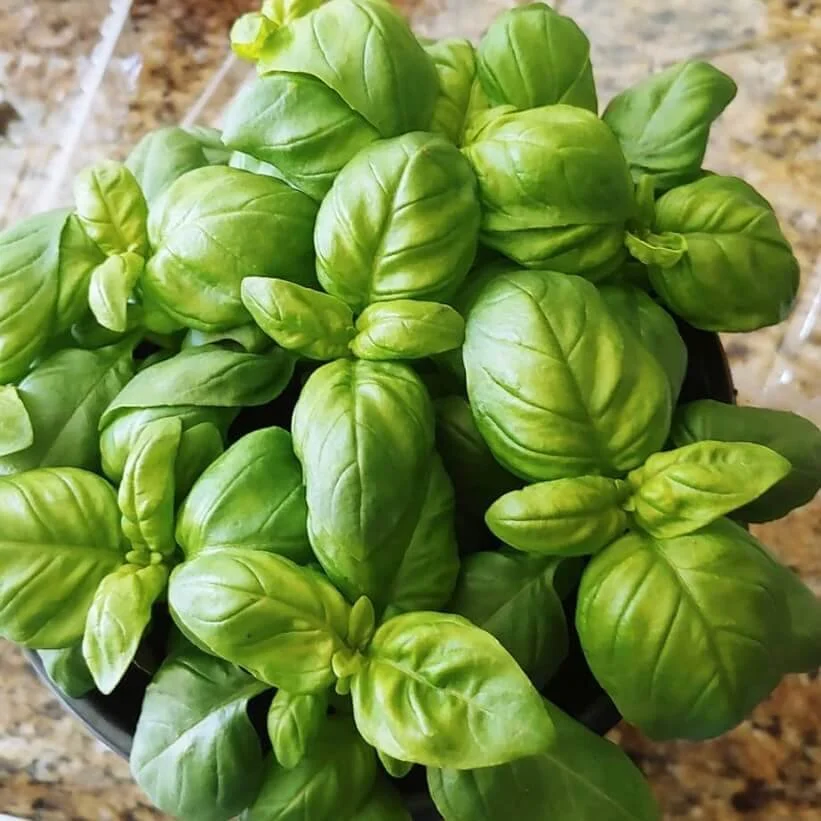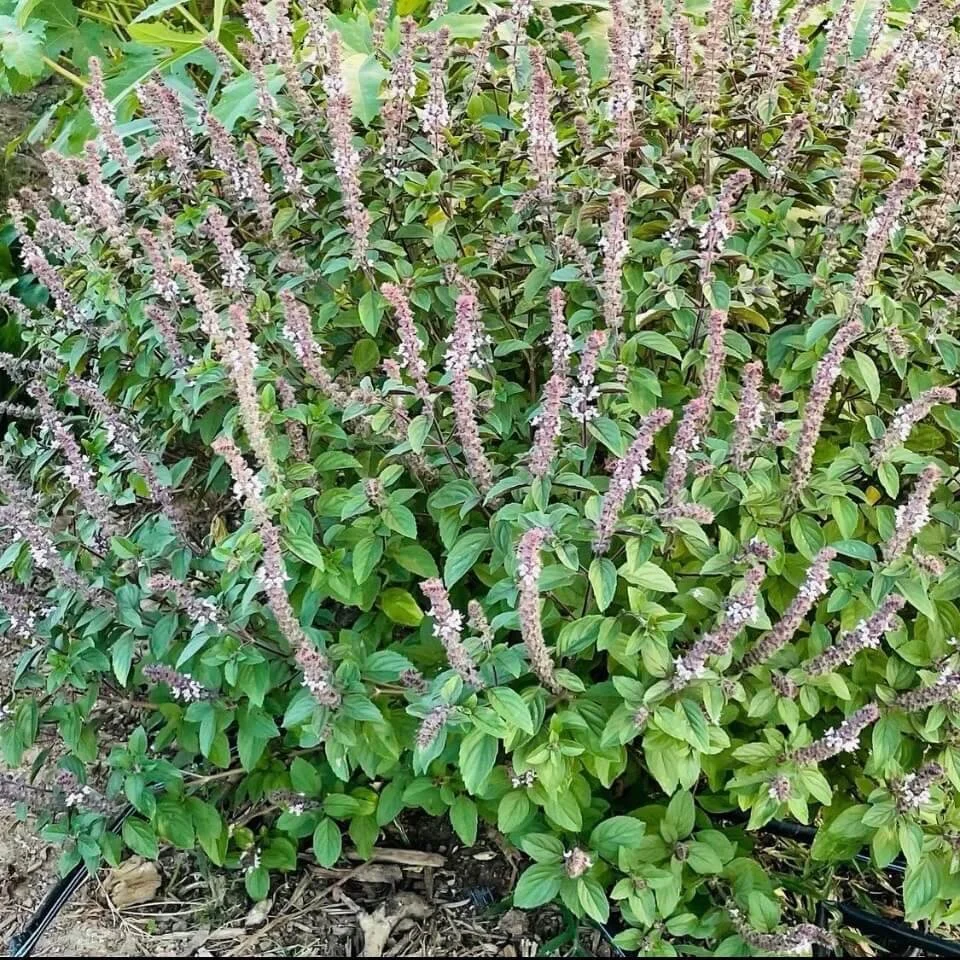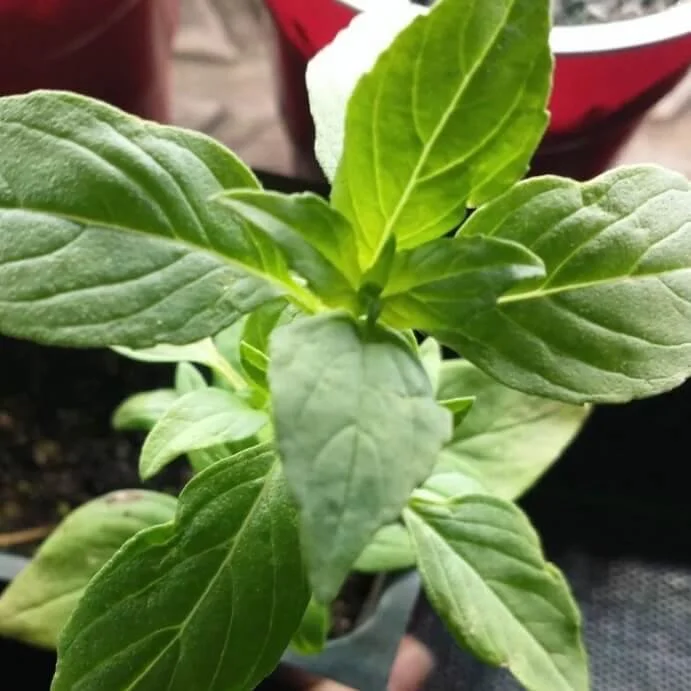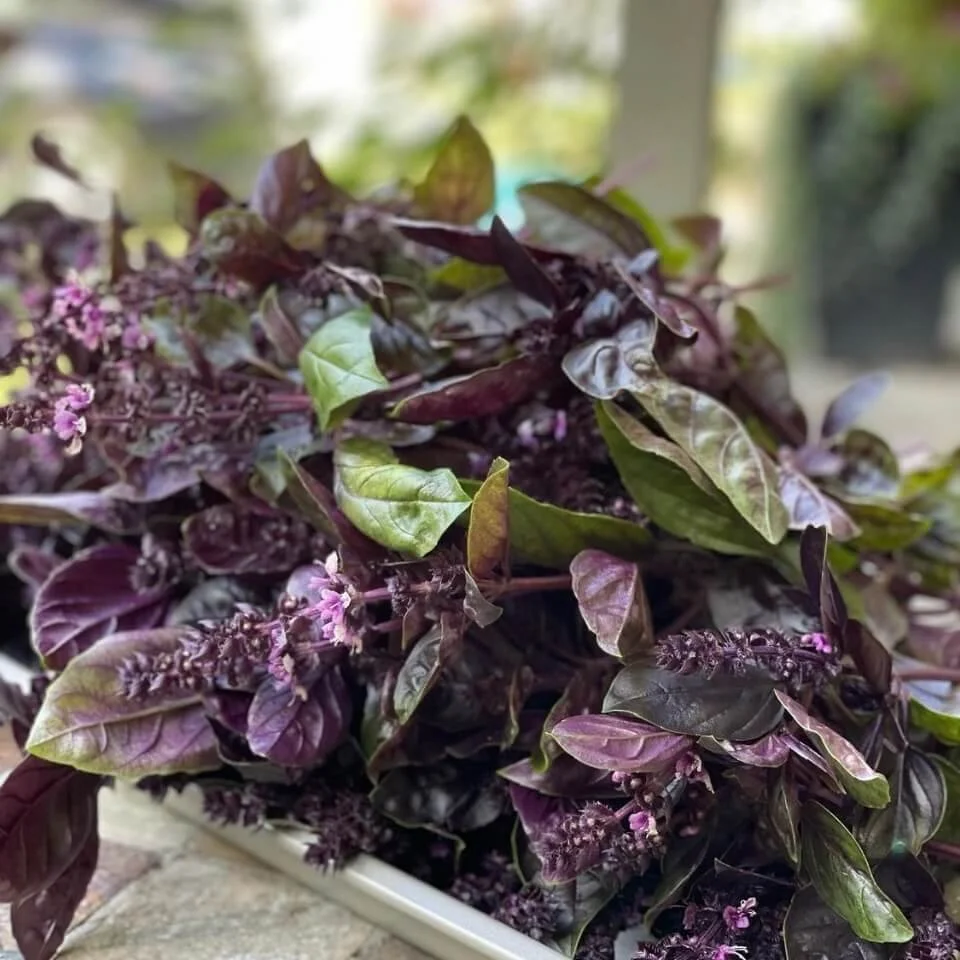How To Grow Basil Plants
About Basil
The annual herb basil, also known as Ocimum Basilicum, is part of the mint family. It is known for its delicious flavors and is one of the most popular herbs people have in their gardens and kitchens. Its natural habitat is among the temperate climates of Central Africa and Southeast Aisa. This is a great herb for beginner gardeners. This basil plant care guide will give you all of the tools and resources to successfully grow basil from start to end.
-
Ocimum Basilicum
-
Great for Beginners
-
7-10 days.
-
June to September (First Frost)
-
60-90 days.
-
Non-toxic to cats and dogs
Sunlight Requirements
Basil prefers to be in 6-8 hours of direct sunlight. It is possible for your plant to develop leaf burn if left in direct sunlight for extended periods of time. To avoid leaf burn, water your garden only in the early morning and evening. With ample sunlight, you will have a thriving basil plant in no time.
Soil Requirements
Basil plants prefer a well draining soil with a pH of 6-7. The best basil potting mix is composed on organic matter like peat moss or sphagnum moss, vermiculite, and perlite. Basil plants love when its soil is moist and rich, never allow your plant to sit in soggy soil as this can cause unwanted diseases and attract pests.
Recommended Basil Varieties
There are around 150 different varieties of basil plants in the Lamiaceae family. The most common type being sweet basil. Some of our favorites are listed below:
Sweet Basil
sweet basil has a sweeter peppery flavor with a beautiful aroma that everyone will recognize.
African Blue Basil
on the musky end, African blue basil has a unique look and taste with its woodsy clove aroma.
Lemon Basil
lemon basil is sweet and tangy with its lemon flavors and anise hints. It has beautiful white flowers.
Purple Basil
unique for its purple appearance. Purple basil has a strong sweet clove flavor.
Starting Basil From Seed
Basil is one of the best herbs for beginners to start from seed. Starting plants from seed can be very stressful, but with the right tools and resources you will have basil plants in no time.
TOOLS REQUIRED:
Basil Seeds
Seedling Tray or Small Cups
Peat Pellets or Potting Soil
Grow Lamp (Optional)
Follow these simple steps for starting your basil plants from seed.
Choose a Variety: this is the easiest part, choose the type of basil you want to grow. Check out our recommended basil types to get inspiration.
Check the Weather: for optimal success wait until 6-8 weeks before the last frost. This will vary depending where you live.
Prepare the Seeding Tray: fill your seedling tray with potting mix and peat pellets.
Sow your Seeds: now for the fun part. Spread 2-3 basil seeds in each cell or pot ¼” deep, then place a light layer of soil on top.
Regulate the Temperature: make sure to always keep the temperature in between 75-85°F until germination. Generally, it takes 7 to 10 days before you see sprouting. You can help regulate the temperatures in the room by investing in a grow lamp or covering the tray with a clear dome.
Regulate the Moisture: the soil should always be moist. Do not confuse this with wet, if your basil seeds are soaking in water, it will likely drown the seeds. In the beginning be sure to keep a close eye on the moisture and you should be good to go.
Promote Growth: once you see your basil plant have around 6 sets of leaves, pinch off the top few to promote growth.
Harden your Basil: before transferring your plant outdoors, you will want to prepare it for the outdoor climates. When temperatures are above 50 degrees, place your plant in an outdoor location for one hour. Gradually, over the next couple of weeks increase the duration of time the plant is exposed to colder climates.
Transplant your Basil Plant: now its time for the easy part, our step-by-step instructions on how to transport your basil plant to its permanent home for the season
Companions of Basil Plants
Basil plants specifically have many beneficial companion plants. Some of which include, asparagus, tomatoes, borage, chives, marigolds, peppers, carrots, beets, radishes, turnips, and parsnips. Always avoid: Cucumbers and Fennel.
Transporting Mature Basil Plants
Sometimes it's a lot harder to start basil from seed, so you head on over to your local plant nursery for plant ready basil plants. Or your basil plants are finally ready for transport to a larger container. Depending on the container or planting location, you may want to separate the basil plant into smaller sections.
TOOLS REQUIRED
Larger Pot (unless planting in ground)
Hand Shovel
Potting Mix composed of peat moss (eco-friendly: sphagnum moss), compost, perlite, and vermiculite.
Follow these easy steps for transporting your baby basil plants into its new home.
Grab the Larger Container: cover the bottom layer of your pot with an inch of potting mix.
Secure The Basil Plant: grab the original pot holding the basil and place your hands around the base of the plant securing the stems gently with your hand.
Flip The Pot Upside Down: while holding onto the base of the basil plant, flip the container upside down, apply a little pressure and allow the plant to gradually slide out. If you have difficulty getting the plant out of the container, give it a gentle shake to get it loose.
Place The Basil Plant in The New Container: take the plant and place it on top of the inch layer of soil in the new pot. Make sure that the base of the plant is at least a half an inch below the rim of the container. Always remember that you can add more soil later.
Fill in The Gaps: take the existing potting mix and fill in any gaps around the basil plant. Under no circumstances should you pack the soil, make sure that there is enough aeration for your plant.
Give a Good Water: after moving any plant, you should always give it a good watering to minimize shock to the plant.
Enjoy: over the next couple weeks, make sure that your basil plant is continuing to thrive and make adjustments if needed.
Harvesting
The general rule of thumb when harvesting basil plants is to harvest from the top of the stem down. Make sure to always leave a few leaves to allow for the plant to grow back. For beginners, pick off smaller amounts of leaves when you are cooking opposed to harvesting a large amount. Do not harvest leaves off of your basil plant too early, make sure that it is at least 6 inches tall before trimming it.
Turning Basil Into Seasoning
There are numerous ways to dehydrate your basil plants for seasoning. We use two methods, one in the oven and the other in a dehydrator.
-
After taking a cutting from your basil plant or harvesting the whole thing Grab a herb rack or place your basil on a paper towel and leave out until you can crumble the leaves with your fingers. Store in a sealed container, our favorite is a mason jar.
-
Set your oven to 100-115 F. Dry for a few hours and then flip them. This ensures that moisture is removed evenly throughout the leaf. Check every hour to make sure that it is not burning. Store in a spice sealed container.
-
Under the lowest possible setting, spread out your basil leaves across the rack. Wait until you are able to crumble the leaves with your fingers. Store in a sealed container.
Susceptible Diseases
Basil plants are susceptible to many pests and diseases, some of which include the following:
Fusarium Wilt
Leaf Spot
Basil Shoot Blight
Downy Mildew
Root Rot
Slugs
Thrips
Aphids
Frequently Asked Question’s
-
According to the ASPCA, basil plants are non toxic to cats and dogs.
-
Some of the most common health benefits that come from consuming basil plants is:
Improved glucose in diabetics.
Enhanced immune system.
Improved memory and cognition.
Improvement in mental stress.
Enhances oral and skin health.
If you or any other person has a medical concern, you should consult with your health care provider or seek other professional medical treatment immediately.
-
Description text goes here
-
When two plants benefit from one another by being grown close together. Some benefits of companion gardening include
Larger plants have the ability to shelter smaller plants from the elements.
Some plants have the ability to create a support system with one another.
A lot of plants have the ability to deter/attract insects that can be beneficial to the health of the plant.
Companionship among plants can promote a nutritious soil medium.









